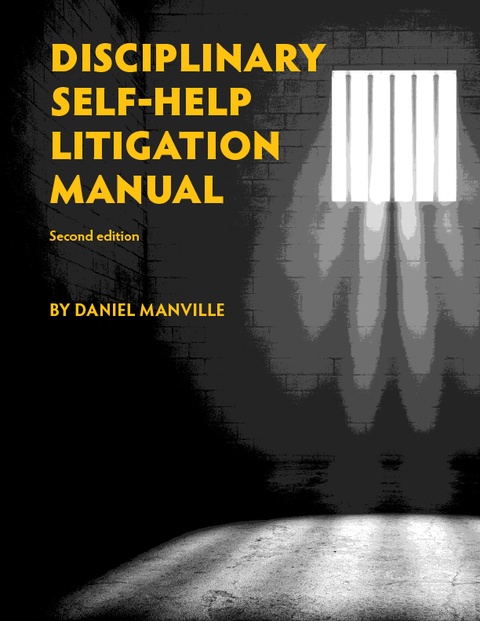Article discusses PLN and censorship of PLN publications
Prisons are censoring publications that challenge state power
Reporter
Many civil liberties violations and instances of state abuse that incarcerated people experience are rendered invisible from the rest of the country. Prisons are cracking down on incarcerated people’s rights to access information, learn, and read the news—a huge threat to the First and Fourth Amendments.
The concept of banned books and magazines—reading materials deemed too dangerous or subversive—may seem anachronistic and even Orwellian. But prisons across the United States have long attempted to restrict what prisoners can read, and some are currently attempting to limit inmates’ access to a particular magazine.
Prison Legal News is a monthly magazine published by the Human Rights Defense Center (HRDC). It primarily reports on criminal justice issues, and features both investigative pieces as well as educational resources for inmates to fight abuse or government misconduct in prisons. It’s also banned in prisons in the State of Florida.
This May, the Eleventh Circuit Court of Appeals upheld Florida’s 2009 decision to ban the publication in the state’s public prisons on the grounds that the magazine contains advertisements for services that aren’t allowed in the prisons, like the sale of postage stamps and pen pal services.
Judge Ed Carnes speculated that the ads may provide “temptation” for inmates to commit fraud and other criminal acts. It’s a legal framework that could, according to Sabarish Neelakanta, General Counsel & Litigation Director at HRDC, allow for a broad range of censorship of reading materials. Advertisements for kitchen knives or alcohol, for example, could justify banning a cooking magazine entirely.
“That was one of the arguments we raised in our briefing to the Eleventh Circuit,” Neelakanta said. “If there’s an article that talks about ‘escape to Bermuda,’ that’s illegal within a jail, and presumably could be encompassed under a technical reading. A whole slew of other publishing entities could be affected.”
Human Rights Defense Center is fighting back and challenging the decision, and is preparing to the petition the United States Supreme Court for review. But Florida isn’t the only legal battleground for HRDC, which has brought lawsuits against over 50 prisons in 40 states. And unlike in Florida, censorship is in many cases based on content.
HRDC is suing the Illinois Department of Corrections, alleging that the institution has implemented policies that deny inmates access to HRDC materials. In the complaint, HRDC details incidents of incarcerated subscribers to Prison Legal News not receiving complete copies of the magazine, and argued that this censorship violates both the First and Fourteenth Amendments.
“Defendants have adopted and implemented mail policies and practices prohibiting delivery of written speech from HRDC while failing to provide due process notice of and an opportunity to challenge that censorship,” the complaint reads.
As part of an interim experiment, Neelakanta said the parties have agreed to track the delivery of Prison Legal News to around 15 facilities in Illinois to determine whether issues were being delivered and censored. According to Neelakanta, although the experiment has only been in place for less than a month, they’ve continued to observe delivery problems .
Prison Legal News is also suing the Arizona Department of Corrections for banning specific issues of the magazine because of alleged “sexually explicit content” in its pages. The content in question includes an excerpt from a court opinion describing an incident of sexual assault against an inmate.
Paul Wright, founder and executive director of the Human Rights Defense Center and editor of Prison Legal News, thinks that the publication is targeted because it focuses on jail conditions, corruption, and brutality in prisons. “It makes them look bad,” he said. “It gives readers the tools to stop these things.”
While Prison Legal News could be the publication most frequently banned in the United States, it’s far from the only instance of censorship in prisons. Many of the reading materials that are banned in prisons are those that challenge the criminal justice system. Prisons in states including New Jersey and North Carolina had banned The New Jim Crow: Mass Incarceration in the Age of Colorblindness. And The New Jim Crow was also labeled a security threat in Florida—as was Douglas Blackmon’s Slavery By Another Name.
Incarcerated people do not lose their rights to stay informed when they are detained by the state, but correctional facilities using “security concerns” to deny inmates’ access to reading materials is not uncommon. Some have only allowed incarcerated people to receive postcards, claiming that magazines and letters allow inmates to more easily receive contraband. Others, Neelakanta said, have argued that staples used to bind magazines could be used for weapons or tattoo guns. Jails have other ways to manage those “security risks”, and Neelakanta thinks it’s problematic that they often resort to censorship of political content.
HRDC has won most of its First Amendment lawsuits—Neelakanta estimates over a 95% success rate. But that prisons are denying inmates access to reading materials—whether by labeling them a “security threat” or invoking archaic statutes—comprises a huge threat to press freedom, and publications’ right to reach their audiences.







